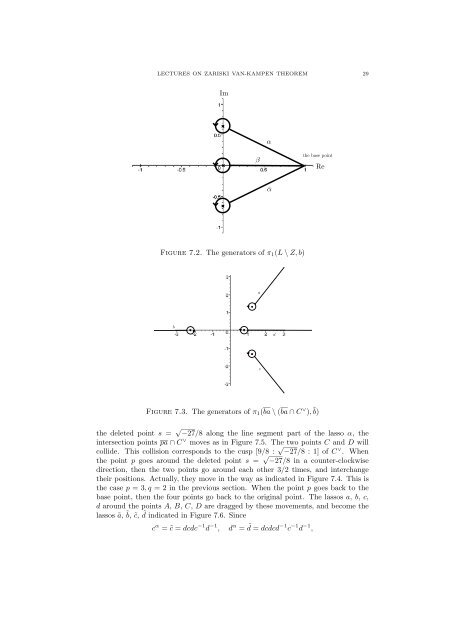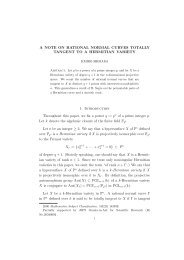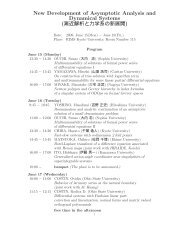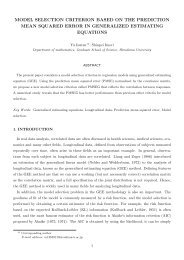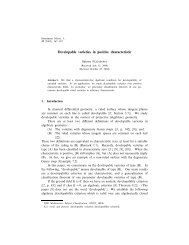LECTURES ON ZARISKI VAN-KAMPEN THEOREM 1. Introduction ...
LECTURES ON ZARISKI VAN-KAMPEN THEOREM 1. Introduction ...
LECTURES ON ZARISKI VAN-KAMPEN THEOREM 1. Introduction ...
You also want an ePaper? Increase the reach of your titles
YUMPU automatically turns print PDFs into web optimized ePapers that Google loves.
<strong>LECTURES</strong> <strong>ON</strong> <strong>ZARISKI</strong> <strong>VAN</strong>-<strong>KAMPEN</strong> <strong>THEOREM</strong> 29<br />
Im<br />
α<br />
β<br />
thebasepoint<br />
Re<br />
ᾱ<br />
Figure 7.2. The generators of π 1 (L \ Z, b)<br />
a<br />
b<br />
d<br />
c<br />
Figure 7.3. The generators of π 1 (ba \ (ba ∩ C ∨ ), ˜b)<br />
the deleted point s = √ −27/8 along the line segment part of the lasso α, the<br />
intersection points pa ∩ C ∨ moves as in Figure 7.5. The two points C and D will<br />
collide. This collision corresponds to the cusp [9/8 : √ −27/8 :1]ofC ∨ . When<br />
the point p goes around the deleted point s = √ −27/8 in a counter-clockwise<br />
direction, then the two points go around each other 3/2 times, and interchange<br />
their positions. Actually, they move in the way as indicated in Figure 7.4. This is<br />
the case p =3,q = 2 in the previous section. When the point p goes back to the<br />
base point, then the four points go back to the original point. The lassos a, b, c,<br />
d around the points A, B, C, D are dragged by these movements, and become the<br />
lassos ã, ˜b, ˜c, ˜d indicated in Figure 7.6. Since<br />
c α =˜c = dcdc −1 d −1 , d α = ˜d = dcdcd −1 c −1 d −1 ,


